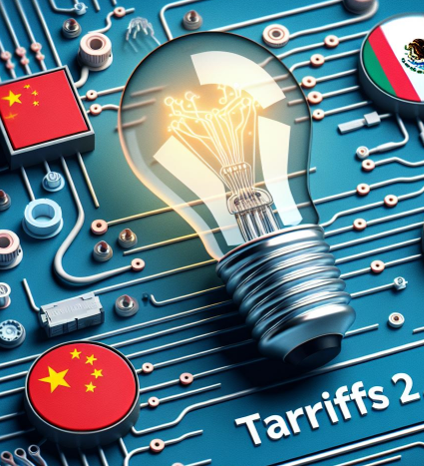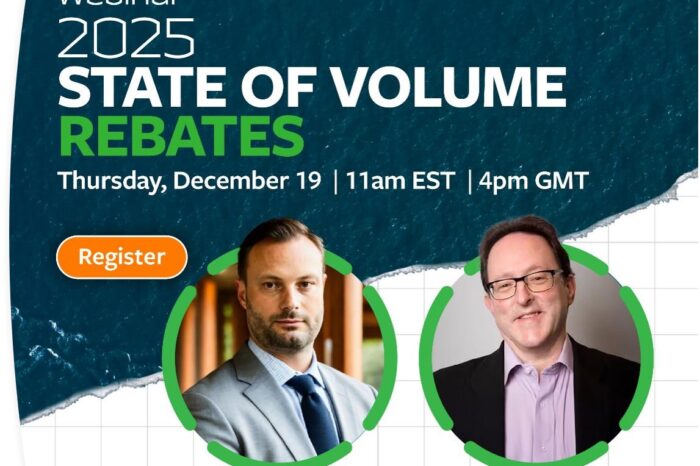SPAs – Are We / They In Or Out of Control?
SPAs, special pricing agreements, were originally conceived to ensure the integrity of local market into stock, and “street” pricing while providing distributors and manufacturers with a targeted sales pricing tool to deploy on an account-specific basis. The definition of “account-specific” has broadened with many taking liberty with the breadth (with and without manufacturer approval) and, for many, represent a significant percent of sales.
For years the practice has been valued and reviled. Much of the discussion relates to SPA process management and timely reconciliation of funds.
NAED undertook discussions to improve process and developed common terminology and some recommended processes, however, implementation is distributor / manufacturer specific. Companies that have good processes value SPAs and view them as a competitive advantage to capture business and manage profitability. For others, it is a profit drain, typically due to process inadequacies.
Maureen “Mo” Barsema, former CFO for Revere Electric, has first hand insight into SPA management and processes to identify costs and improve profitability. She shares some observations regarding SPAs and invites distributors to share their current experience via a brief survey (with results to be shared in a future posting on ElectricalTrends.
Today’s competitive landscape is much different than it used to be. Many of us (distributors) fondly look back to the days when we dealt with local competitors who operated within a 50 mile or so radius.
Fast forward to the present. Distributors are now exposed to an expanded market presence with traditional competitors battling for market share with new competitors such as Amazon, Grainger, home centers, and others playing in what once was a more sacred, more protected space.
More competition leads to more margin compression, putting more pressure on the bottom line.
However, hopefully, not everything we sell is subject to competition because we are better skilled, nimble and cognizant of earnings. Even so, we must understand what portion of all the products we sell are contributing to this margin compression phenomenon.
How can we generate more profit?
This is a long-term survivability issue for distributors, especially with the pressure of the need for continued investment to ensure renewed relativity and the capex requirements to support a more digital presence while other overhead expenses increase simultaneously. Probably one of the last places most distributors look to for more increased profit dollars is within their contracted sales agreements and the cost associated to support them. In other words, your SPAs!
First, let’s look at why we experience margin compression.
There have been numerous articles, webinars, seminars, industry talks, etc. on this topic, so there is no need to do a dive deep into the topic again. We all know selling on price alone hurts each of us, and all of us. When distributors do this and convince manufacturers that a new lower price level is “the going rate”, manufacturers respond too often with a lower priced SPA. And we start, or continue, the downward path to lost sales revenue and lower profit dollars.
Afterall, the purpose of a SPA is to capture these market opportunities with the distributor. But I have to ask – when will the ceiling stop falling?
Consider the number of instances where you have more than one SPA for the same item for the same customer at different sell price levels? (Yes, it occurs, and more often than distributors want to admit and manufacturers know!) Most likely, distributors justifiably do this due to unique job negotiations and blanket contract deals. But are you absolutely sure this is the case? What don’t you know … and do you know if your customers are taking advantage of you? Or maybe your salesperson buckles and tells the customer, “I can do better” instead of protecting the margin potential of the deal.
Price, and contract price transparency, is necessary, but really is a double-edged sword. While it can lead to margin compression by tempting sales reps to offer lower prices, it should, and is meant to lead them to set higher prices while they line their pockets with commission earnings. In the end, the price transparency exposes the truth of your sales team’s pricing behaviors within your customers. Isn’t it surprising to see how some product price levels for smaller sized customers are lower than larger sized accounts who are producing more revenue and supporting more product volume? Why does this happen and who is policing the behavior? Is this behavior embedded in your contract agreements?
Now more than ever, the SPA (special price agreement) model is a profit recovery weapon.
Let’s talk about the reason SPAs exist.
Manufacturers initially set price levels for distributors to support. But distributors sell to customers whose favorite words are “you’re too high.” This spurs the distributor to ask the manufacturer for price support in the form of a SPA. Again, the SPA is created as an agreement between a distributor and manufacturer to allow both parties to capture market share in a competitive environment. That is all well and good until the practice gets out of hand. Both distributors and manufacturers have created a hornet’s nest swarming out of control. It is wrought with inefficient cash utilization, profit leaks, unrationalized sell and costs, process flaws, write-offs, etc. Would you agree? What does the ET audience have to say?
SPAs and SPA management have been industry topics for many years. Some support, some prefer net pricing. There is no industry consensus (nor perhaps there should be) but, all should be able to admit that the process can be more cost-effective and profitable for all.
To gauge the current state of SPAs, you are invited to take a short, 4-minute, 10 question survey (Click here to take the survey). All input is confidential. I’ll share overall results once we gather enough responses.
Think about your table of waste while taking the survey and stay tuned for upcoming articles that will guide you down a contract world of quality, control and assurance for a more profitable SPA world. Remember, SPAs are a hidden gem, full of enriching paths of white space opportunities in market share and bottom-line profitability. Are your SPAs in or out of control?
Maureen “Mo” Barsema, an electrical industry veteran and was VP and CFO for BJ Electric and Revere Electric. She now is business coach focused on supporting distributors in the areas of financial management. She can be reached at mo@barsema.com or 608.444.0849.
While sales growth is important, profitability is key to survivability as well as the ability to continuously reinvest in the business. With SPAs a significant percent of sales, and hence profitability, ensuring the effectiveness of SPAs is critical … for distributors in their usage and processing and for manufacturers in managing SPA agreement utilization levels and optimizing account level, and SKU-level, margins. Processes and systems help, but the first step is understanding if you are hemorrhaging productivity and profitability as you implement these agreements.
Other ElectricalTrends articles on SPAs include:
- Increasing Sales & Profits with SPAs … A Case Study (April 2013)
- SPAs To Grow in Importance … Drive Profitability (June 2009)
- SPAs … A Key to Tomorrow’s Distributor Profitability, Essential Today (April 2009)
- In 2009, Allen Ray Associates, an original co-publisher of ElectricalTrends, developed a white paper for DataAlliance, an electrical leader in VMI services, now part of TrueCommerce. The white paper, “State of SPAs in the Electrical Industry”, is for download.
What is your perspective of SPAs? A valuable sales tool or would you prefer net pricing? Can your ERP system handle multiple into-stock net pricing levels from suppliers? As a manufacturer, which would you prefer?
And, administratively, are your processes “good” or are you “dealing the best you can”?

























